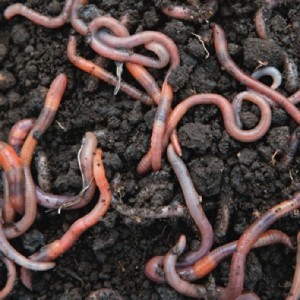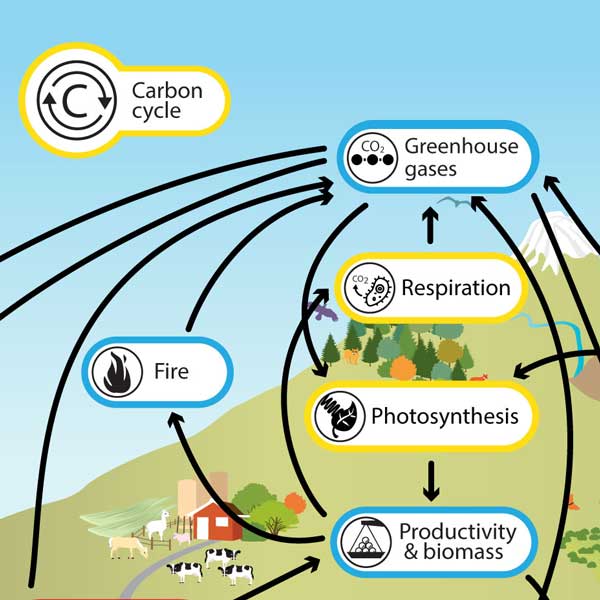Report on Microbial Solutions for Soil Remediation and Sustainable Development
This report details research on the use of microbially-enhanced Spent Mushroom Substrate (SMS) for the remediation of degraded soils. The study’s methodology and findings present a sustainable strategy that directly supports the achievement of several United Nations Sustainable Development Goals (SDGs), particularly those concerning terrestrial ecosystems, responsible consumption, and food security.
Research Objectives and Alignment with Global Goals
Primary Research Aims
- To enhance the quality, maturity, and stability of SMS compost through inoculation with plant growth-promoting microbial strains.
- To evaluate the impact of the enhanced compost on the physicochemical properties, nutrient levels, and microbial diversity of degraded soil.
- To assess the effect of the treatment on the growth and health of Pinus sylvestris seedlings as an indicator of ecosystem restoration.
Contribution to Sustainable Development Goals (SDGs)
- SDG 15 (Life on Land): The core of the research directly addresses target 15.3 by seeking to combat desertification and restore degraded land and soil. By improving soil structure and microbial biodiversity, the study offers a practical method to halt and reverse land degradation.
- SDG 12 (Responsible Consumption and Production): The project exemplifies circular economy principles by converting agricultural waste (SMS) into a high-value product for soil amendment. This contributes to target 12.5, which aims to substantially reduce waste generation through prevention, reduction, recycling, and reuse.
- SDG 2 (Zero Hunger): By developing methods to restore soil fertility, this research supports target 2.4, which calls for sustainable food production systems and resilient agricultural practices. Healthy, productive soil is the foundation for food security.
- SDG 13 (Climate Action): Restoring soil health enhances its capacity as a carbon sink. Furthermore, promoting healthy forest growth (Pinus sylvestris) contributes to carbon sequestration, aligning with broader climate mitigation efforts.
Methodology: A Framework for Sustainable Waste Valorization
Compost Enhancement Process
The study utilized SMS as a base organic amendment. To improve its composting efficacy, the following microbial inoculants were introduced:
- Bacillus subtilis (B. subtilis)
- Azotobacter chroococcum (A. chroococcum)
- Paenibacillus mucilaginosus (P. mucilaginosus)
- A mixed microbial inoculant (MMI) combining all three strains.
Experimental Evaluation
Pot experiments were conducted to assess the remediating effects of the different compost treatments. Key parameters measured included:
- Soil physicochemical properties (porosity, pH)
- Soil nutrient content
- Soil microbial community structure and diversity
- Growth indicators for Pinus sylvestris seedlings (plant height, stem diameter, chlorophyll content)
Key Findings: Measurable Progress Towards SDG Targets
Impact on Soil Health and Land Restoration (SDG 15)
The application of SMS amended with the mixed microbial inoculant (MMI) yielded significant improvements in soil quality, directly contributing to land restoration goals.
- Improved Physical and Chemical Properties: The MMI treatment significantly enhanced soil porosity and optimized soil pH.
- Increased Nutrient Availability: A marked increase in essential soil nutrients was observed in soils treated with MMI-enhanced compost.
- Enriched Microbial Biodiversity: The treatment fostered beneficial microbial communities, with a notable enrichment of Proteobacteria and Basidiomycota, which are crucial for nutrient cycling and soil health.
Promotion of Ecosystem Health (SDG 2 & SDG 15)
The improved soil conditions translated directly into enhanced plant vitality, demonstrating the potential for re-establishing healthy ecosystems on degraded land.
- The MMI treatment resulted in a notable increase in the height, stem diameter, and chlorophyll content of Pinus sylvestris seedlings when compared to control groups.
Conclusion: A Replicable Strategy for Sustainable Development
This research confirms that inoculating Spent Mushroom Substrate with a mixed microbial inoculant (MMI) is a highly effective strategy for producing superior compost. This enhanced compost serves as a powerful tool for soil remediation, demonstrating a synergistic effect that simultaneously improves soil structure, enriches microbial life, and boosts plant growth.
The approach offers a viable and sustainable pathway for achieving key environmental targets, presenting a clear model for:
- SDG 15.3: The effective restoration of degraded soils.
- SDG 12.5: The circular reuse of agricultural waste, reducing landfill burden and creating value from byproducts.
- SDG 2.4: The implementation of resilient agricultural and forestry practices that build soil fertility and support long-term productivity.
Analysis of Sustainable Development Goals (SDGs) in the Article
1. Which SDGs are addressed or connected to the issues highlighted in the article?
-
SDG 2: Zero Hunger
The article addresses improving soil quality, which is fundamental for sustainable agriculture and food production. By developing methods to restore depleted soils, the research contributes to creating resilient agricultural practices that can enhance productivity and ensure long-term food security.
-
SDG 12: Responsible Consumption and Production
The study focuses on the “circular reuse of agricultural waste” by using spent mushroom substrate (SMS) as a soil amendment. This directly aligns with promoting sustainable production patterns and reducing waste generation by turning a byproduct into a valuable resource for soil remediation.
-
SDG 15: Life on Land
This is the most directly addressed goal. The article’s primary objective is the “effective restoration of degraded soils” and “remediating degraded soils.” This contributes to the broader aim of combating desertification, halting land degradation, and restoring terrestrial ecosystems.
2. What specific targets under those SDGs can be identified based on the article’s content?
-
Target 2.4: Sustainable food production and resilient agricultural practices
The article’s research on enhancing soil quality through microbial-inoculated compost directly supports this target. It aims to “progressively improve land and soil quality” by introducing a method that improves soil porosity, pH, and nutrient content, which are key components of resilient and sustainable agricultural systems.
-
Target 12.5: Substantially reduce waste generation
The core methodology of the study involves using “Spent mushroom substrate (SMS),” an agricultural waste product, for composting. This is a clear example of waste reduction through reuse and recycling, as stated in the article’s conclusion about offering “a sustainable strategy for the circular reuse of agricultural waste.”
-
Target 15.3: Combat desertification, restore degraded land and soil
The research is explicitly focused on this target. The title of the research topic, “Microbial Solutions for Restoring Depleted Soils,” and the study’s aim to evaluate the impact of SMS compost on “soil improvement” for “remediating degraded soils” directly contribute to efforts to restore degraded land and achieve a land degradation-neutral world.
3. Are there any indicators mentioned or implied in the article that can be used to measure progress towards the identified targets?
-
Indicators for Targets 2.4 and 15.3
The article provides several specific, measurable indicators to assess the improvement of soil and plant health:
- Soil Physicochemical Properties: Changes in soil porosity, pH, and nutrient content are explicitly measured to gauge soil quality improvement.
- Soil Microbial Diversity: The study assesses the enrichment of “beneficial microbial communities dominated by Proteobacteria and Basidiomycota” as an indicator of restored soil health.
- Plant Growth Metrics: Progress is measured by tracking “plant height, stem diameter, and chlorophyll content” of Pinus sylvestris seedlings, which serve as direct indicators of the effectiveness of the soil restoration.
-
Indicator for Target 12.5
The primary indicator implied for this target is the reuse of agricultural waste.
- Proportion of Agricultural Waste Reused: The use of “Spent mushroom substrate (SMS)” as the base material for the compost directly relates to an indicator measuring the amount or proportion of agricultural waste that is successfully recycled or reused rather than discarded.
4. Table of SDGs, Targets, and Indicators
| SDGs | Targets | Indicators |
|---|---|---|
| SDG 2: Zero Hunger | Target 2.4: By 2030, ensure sustainable food production systems and implement resilient agricultural practices… that progressively improve land and soil quality. |
|
| SDG 12: Responsible Consumption and Production | Target 12.5: By 2030, substantially reduce waste generation through prevention, reduction, recycling and reuse. |
|
| SDG 15: Life on Land | Target 15.3: By 2030, combat desertification, restore degraded land and soil… and strive to achieve a land degradation-neutral world. |
|
Source: frontiersin.org







